| বাংলায় পড়ুন | Researchers and Reporters: Shama Sultana Ayesha Akhter |
Bangladesh has the highest air pollution levels in the world. Gradually, Dhaka, the city of life, has lost its habitability. Air pollution and factory waste are the main causes of this environmental or air pollution. Newspaper articles frequently discuss factory fires and worker instability. A unique factory in this regard is Karupannya Rangpur Limited. This factory’s temperature is only 25 degrees Celsius, while the rest of the country is experiencing tremendous heat! There are seven stories in this massive facility, which is over eight lakh square feet in size. 40 thousand square feet make up each story.
Approximately 5,000 employees work here in two shifts, day and night. A large factory has air conditioning in one room. The thought must have crossed your mind: how is it possible for the factory’s interior temperature to be 25 degrees? The solution is a unique kind of factory design. Let’s talk about Karupannya Rangpur Limited’s history.
The Journey of Karupannya
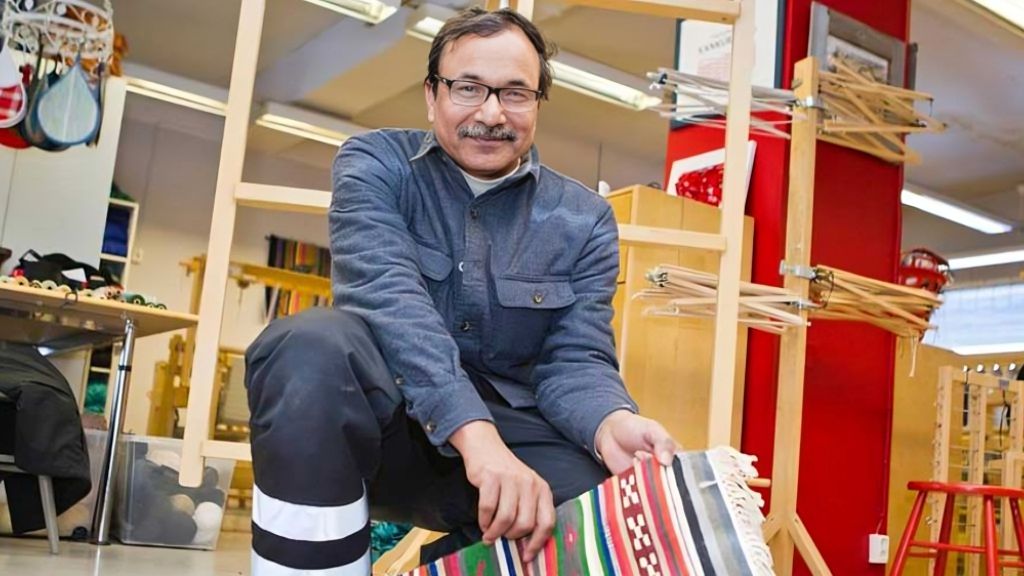
Karuponya Rangpur Limited: Illustrations of local handicrafts and culture that highlight our heritage. | Photo: Collected.
Shafiqul Alam Salim is Karupannya Rangpur Limited’s founder. His birthplace was Rangpur’s Guptapara. That his life is entwined with handicrafts is peculiar. Political motives kept him in Rangpur Jail for three months. He was interested in handicrafts at the time. He then rented a Bangladesh Small and Cottage Industries Association handicraft store that had shuttered at Rangpur Press Club. He established a marketing center for Shatranji there. In addition to creating new artisans, he located and trained 20 practitioners of this extinct Shatranji craft. He opened Rangpur’s traditional Shatranji marketing store, Karupannya, in 1991. He began running campaigns abroad to draw in international investors to Shatranji.
This product was first offered for export to Japan in 2002. He established his plant by renting a BCIC facility that had closed at Nisbetganj village, four kilometers west of Rangpur city, to grow the company. He began weaving Shatranji with fifty ladies and men. Karupannya Rangpur Limited was the company’s name. handcraft factories are currently producing a wide range of handcraft products, even though the trip began with Shatranji. The country currently sells 80 percent of its handicrafts to the industrial sector. For this reason, the Ministry of Commerce has awarded the company the gold medal in the National Export Trophy each year.
The land of greenness
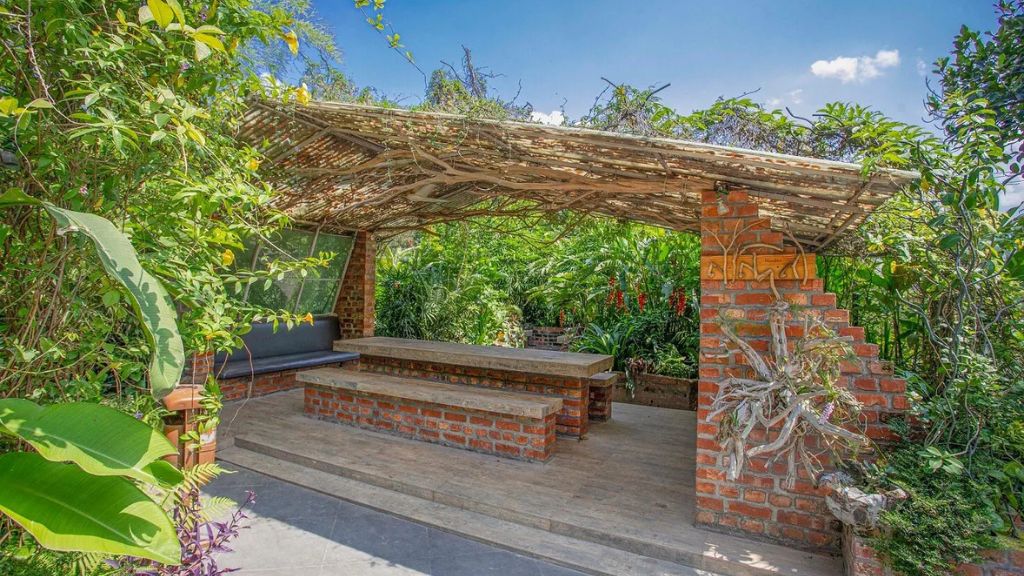
Kingdom of Green: A showcase of eco-friendly creations from Karuponya Rangpur Limited. | Photo: Collected.
It will feel like a green world to anyone who walks into this factory. This tree-filled green factory continuously saves 80 percent of its electricity. For this environmentally friendly plant, the Bangladeshi firm “Nakshabid Architects” was granted the Riba International Award for Excellence-2024, one of the most prominent architectural honors in the world. This magnificent green factory was designed by Bayezid Mahbub Khondker, Head of Architects, and was constructed with traditional knowledge from rural Bengal. This factory is comparable to the Kingdom of Green. Only vegetation is present. Many types of flowers and plants cover brick-stone buildings. The building is adorned with foliage. The service department is housed in a one-story building with a green garden on the roof. It is now known as “Nandini Park.” There are nicely constructed benches for relaxing under the trees. This is Nandini Park, where employees sit and eat lunch.
The sculptures and reservoirs of Bonolota
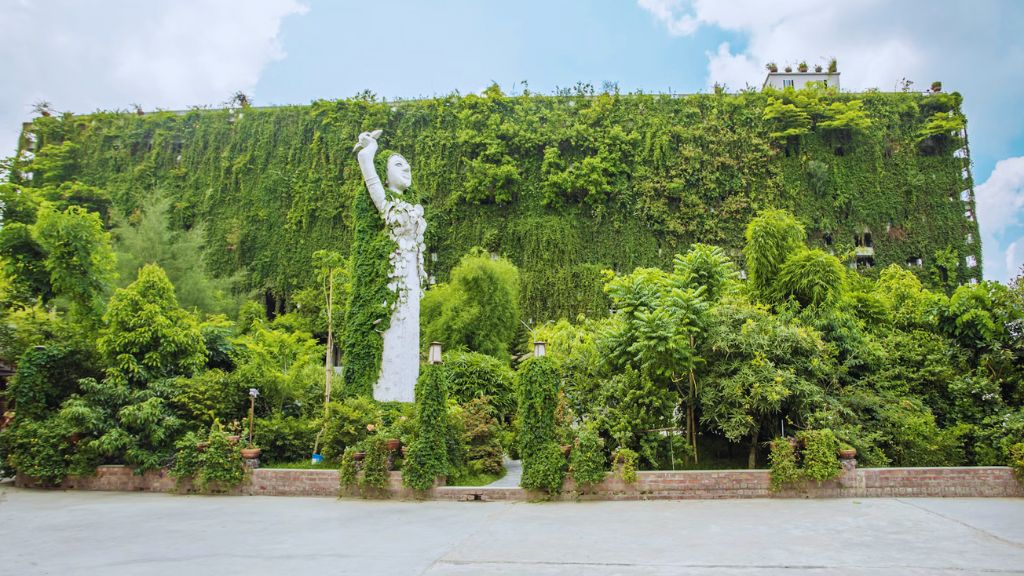
Bonlata Sculpture and Water Body: A confluence of architecture and nature in the artworks of Karuponya Rangpur Limited. | Photo: Collected.
The manufacturing grounds are covered with thousands of sculptures, both enormous and small. The inside walls and stairway are decorated with little statues of women. A lovely sculpture known as “Bonolota” in the shape of a doll can be seen in the site’s front yard as soon as you approach the compound. In essence, the sculpture represents the strength of female emancipation. since women make up 80% of this factory’s 5000 workers. To illustrate this female empowerment, Bonolota sculpture was made.
Reservoirs are designed to maintain a constant temperature in the factory. There are four sizable pond-like reservoirs on the ground-level foyer. A total of 5 lakh liters of water can be stored in these reservoirs, which have a 15,000-square-foot radius. This reservoir receives this iron-free water from Shataranji dyeing facilities. Green vegetation and the wind flowing over this water enter the factory through four 37-foot-radius circular void columns. Then ascend to other floors. Therefore, without air conditioning or a fan, the factory’s interior temperature decreases by 4 to 6 degrees Celsius relative to the exterior.
Specialties of Karupannya
A handicraft factory differs greatly from other types of factories. This factory is distinguished from the others by the surrounding flora. In contrast to other companies, this blacksmith factory does not emit any black smoke, foul-smelling water, or chemical waste. This factory uses raw materials that are renewable and natural. Examples include yarn derived from cotton waste from spinning mills, jute fabric from clothing companies, jute husk, straw, banana bark, maize husk, coconut husk, rice straw, etc. In addition to the surrounding open space, the factory has some amenities for its workers. grocery stores, medical facilities, daycare centers for employees’ kids, emergency firefighting facilities, lunch and dinner facilities, and more.
The view of experts
Environmentalists have high hopes for this green factory. They believe that witnessing this factory would inspire a lot more. The Bangladesh Atmosphere Movement (BPA) member secretary for the Rangpur district, Rashidus Sultan Bablu, claims that the handicrafts factory is a special facility for preserving a temperature balance and pollution-free atmosphere. The factory’s greening absorbs the outside heat, maintaining a clean environment and releasing oxygen, which is necessary for existence.
In the midst of all the negative news about factory fires, workers’ insecurity, Bangladesh’s top position in air pollution, or tragedies caused by extreme heat, Karupannya Rangpur Limited encourages us to dream again. With this green factory as an inspiration, everyone expects the green spirit to spread throughout the nation, from Rangpur to Dhaka.

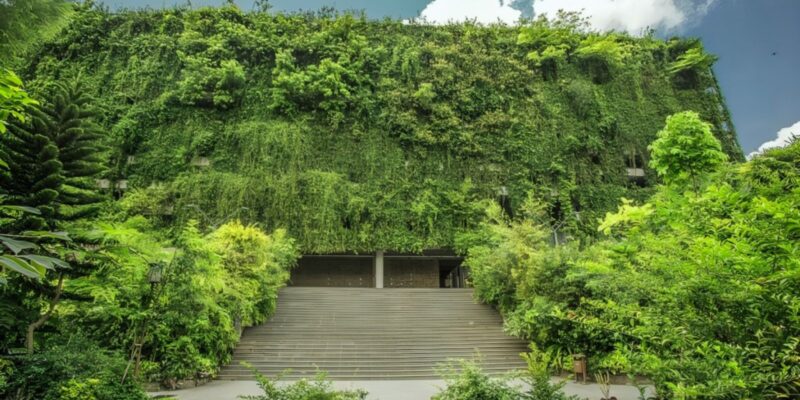







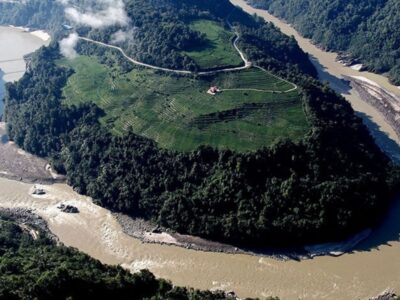



















Comments